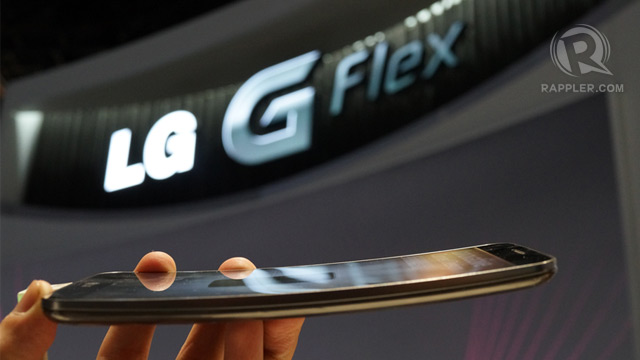SUMMARY
This is AI generated summarization, which may have errors. For context, always refer to the full article.

MANILA, Philippines – When LG announced the curved G Flex smartphone back in October, it appeared to be flexing its tech muscle (pun intended) in the direction of fellow South Korean tech company and bitter arch-rival Samsung.
Weeks prior, Samsung unveiled the world’s first smartphone with a curved display, the Galaxy Round.
Both companies took the idea of a curved smartphone literally in different directions – Samsung’s Galaxy Round curved horizontally from the sides, while LG’s G Flex curved vertically from top to bottom.
We all knew curved displays were coming, and were excited about them – but to be honest both releases underwhelmed. Not that we were bothered about it. Available only to Korean markets – we brushed them off as proof of concepts, two tech companies showing the world what they could do and what was to come.
Then came CES 2014. Both Samsung and LG battled it out in the arena of curved 4K televisions. The justification behind the new TV form factor – curved displays provide a more immersive experience by pulling you into the content. If you stand in front of a 105-inch curved 4K TV you’d understand. Alongside LG’s curved TVs it also unveiled the curved G Flex – scheduled to go on sale globally this Spring.
In theory it suddenly made sense. When you flip the G Flex on its sides it resembles the curved TVs that both LG and Samsung were pimping at the show. But we’re talking about a 6-inch screen; how immersive can one get? That’s not to say the Flex isn’t a great phone. Ironically, none of what makes it a great phone has anything to do with it being curved.
FLEXIBLE
It’s flexibility for example is worth noting. Lie the phone down on a table and its curved back sticks out, press down on it and it will straighten, let go and it will spring back into place. Does this mean the phone is more durable? It’ll survive being sat on while in your pocket that’s for sure, but whether or not the answer to that question is a yes, it is an engineering marvel that gives us a peek into the foreseeable future. One day we may very well be able to do roll up our phones like we would a newspaper.
SELF-HEALING
Another engineering breakthrough is its self-healing back shell. Engineered to smoothen out after a certain degree of heat is applied, the phone is immune to hairline scratches you pick up from everyday use and the occasional brushing up against keys while in your pocket. It’s one of those things you never thought you needed but now wish every phone could do. I’ve seen it with my own eyes and I’m a believer.
GREAT SPECS
Finally the phone also has impeccable pedigree. Aside from its 6-inch curved display and more powerful 3500mAh battery, the G Flex is pretty much the same phone as LG’s flagship G2. And that’s a good thing. We rated the G2 as one of the best all around smartphones of 2013, an honor it truly deserves.
Performance-wise the G2 and the G Flex are built to impress. They are part of an elite group of smartphones that run the new Snapdragon 800 processor and their 13 megapixel camera is also one of the better smartphone cameras out there.
So should you get the G Flex? Why not. If you’re in the market for a phablet – a smartphone that borders on a tablet – then you should at least consider it. The Flex can definitely hold its own when compared to some of the other phablets out there. And it is sorta cool knowing you’re holding a piece of the future in your hands.
Check out our LG G Flex hands-on review from CES 2014:
– Rappler.com
Add a comment
How does this make you feel?
There are no comments yet. Add your comment to start the conversation.